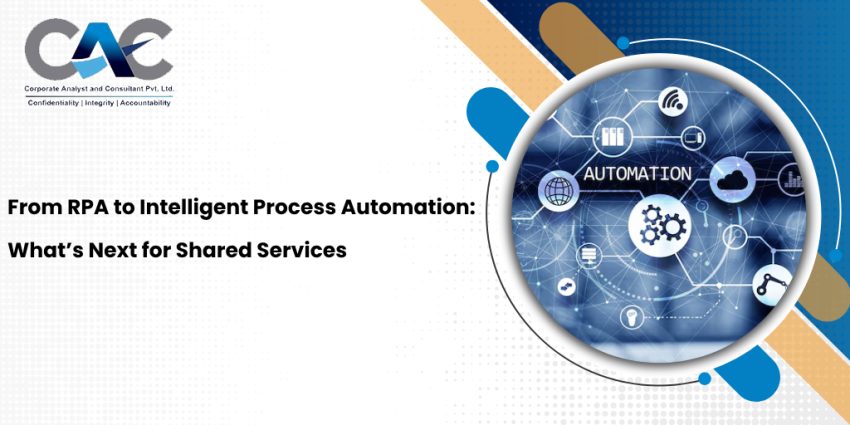Shared Services have long been the backbone of organizational efficiency, centralizing operations and streamlining repetitive tasks. Over the past decade, the introduction of Robotic Process Automation (RPA) transformed how these functions operate. RPA enabled enterprises to automate rule-based, repetitive tasks like data entry, invoice processing, and report generation—reducing human error and improving productivity. However, as businesses grow more data-driven and technology-oriented, the next evolution is already underway: Intelligent Process Automation (IPA).
The Shift from RPA to IPA
RPA was effective in terms of generating operational efficiency but was restricted to structured operations with clear and defined rules. Unlike that, Intelligent Process Automation unites such advanced technologies as Artificial Intelligence (AI), Machine Learning (ML), Natural Language Processing (NLP), and Cognitive Analytics. This combination enables the automation systems to not only perform tasks but also think, learn and evolve.
IPA allows making decisions using the patterns of data, implements automatic, unstructured workflows, and is more natural to interact with human beings. For example, in a shared services configuration, IPA is able to examine inbound customer requests, comprehend intent and direct the request to the appropriate department-or even create a suitable response on its own.
Enhancing Efficiency and Decision-Making
The real strength of IPA is that it can transform shared services into a more strategic and not operational one. IPA enables shared service centres to process fiscal forecasting, talent management analytics, and compliance oversight by incorporating cognitive capacities. IPA does not merely automate human functions, but improves decision-making.
For example, taken into consideration as part of HR shared service, IPA will be able to forecast the staff turnover based on the behavioral data and propose proactive interventions. In finance, it is able to align accounts in both structured and unstructured data, which guarantee real-time accuracy and insights.
Key Benefits of IPA in Shared Services
- End-to-End Automation: IPA doesn’t just execute tasks—it manages entire processes across multiple systems and departments.
- Improved Accuracy and Speed: With AI-driven decision-making, errors are reduced and process turnaround times improve dramatically.
- Scalability and Adaptability: IPA is able to learn new data with ease and is thus applicable in dynamic business systems.
- Enhanced Employee Productivity: Automation allows employees to work on complex and strategic tasks but routine work is done by a machine.
- Actionable Insights: IPA is a powerful platform with high analytics and prediction tools that deliver more effective planning and operations optimization to organizations.
The Future of Shared Services with IPA
With the mainstreaming of Intelligent Process Automation, the shared service model is turning into no more space to save costs but innovate. The next shared service will be based on human insight and machine intelligence, and its purpose will be the creation of value instead of processing transactions.
To build fully autonomous working processes, organizations are already trying hyperautomation, or a combination of RPA, AI, analytics and process mining. Also, in recent times with the advent of cloud-based systems and integration via APIs, shared services are now able to provide real-time and seamless operations across geographies.
Conclusion
The RPA-Intelligent Process Automation is not merely a change of technology but also a change of how the shared services should work. Combining automation with intelligence enables enterprises to access more agility, precision, and strategic worth. The second frontier would be self-learning systems which not only work, but also constantly enhance themselves leading the shared services towards a future of intelligent, data-driven change.
















